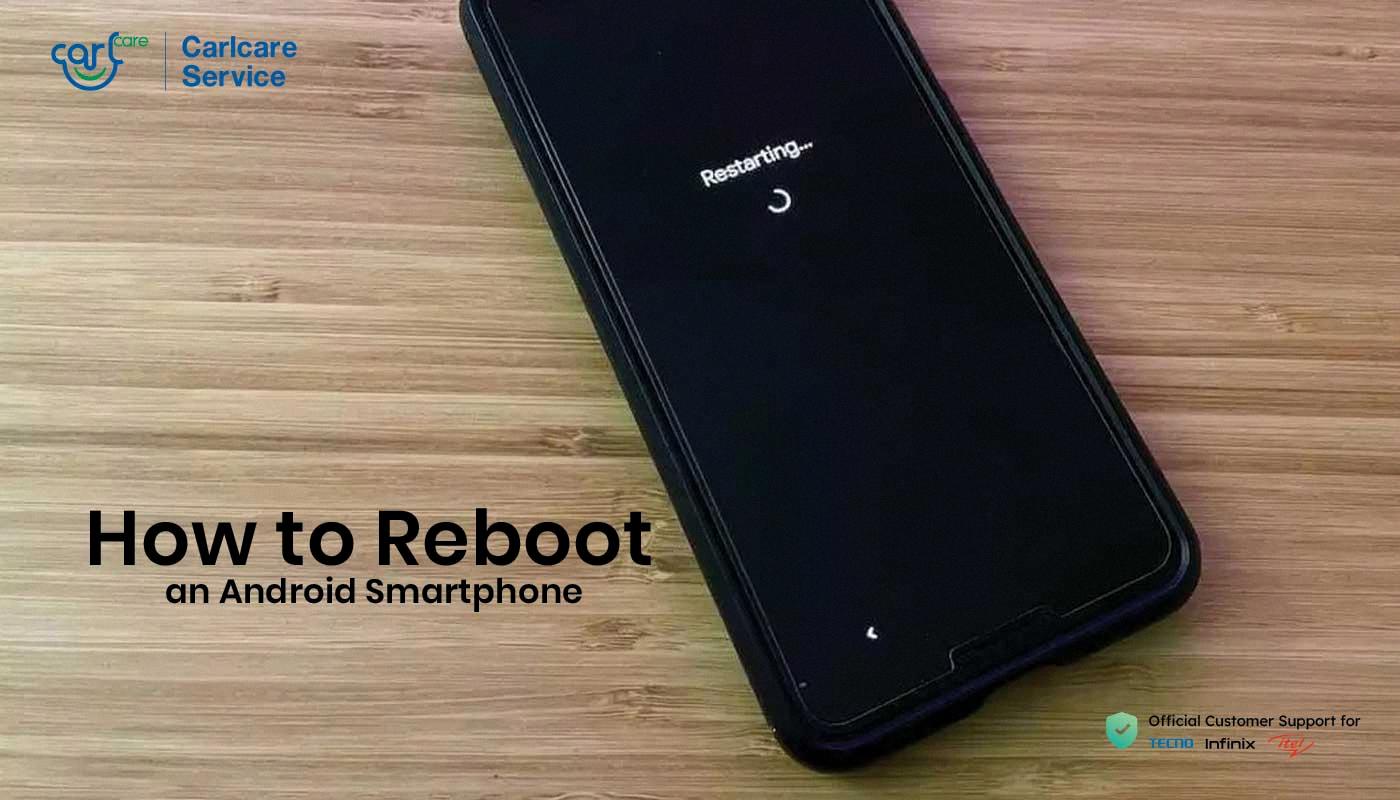Restarting your phone can have various benefits and can help resolve certain issues you may be experiencing. When you restart your phone, all the processes and apps running on your device are closed, and the system files are loaded from scratch. This fresh start can lead to smoother performance and slower-declining battery life.
One of the most significant advantages of restarting your phone is that it clears out any background apps that may be running and consuming resources. These apps can sometimes slow down your device and drain your battery. By restarting, you ensure that all these apps are closed, giving your phone a clean slate to work with.
Restarting your phone can also help with heating issues. Some apps or processes may cause your phone to heat up, which can be uncomfortable to hold and may even affect its overall performance. By restarting, you give your phone a chance to cool down and start fresh, potentially resolving any overheating problems.
Memory problems can also be addressed by restarting your phone. Over time, the memory on your device can become cluttered with temporary files and cached data from various apps. This can lead to slower performance and even app crashes. Restarting your phone clears out this clutter and frees up memory, allowing your phone to run more smoothly.
Another benefit of restarting your phone is that it can help with call signal issues. Sometimes, your phone may struggle to connect to a network or experience poor call quality. By restarting, you give your phone a chance to re-establish its connection with the network, potentially resolving any signal problems.
It is important to note that restarting your phone is different from performing a factory reset. A factory reset erases all your data from your phone, so it should only be done as a last resort or when you are specifically trying to resolve a major issue. Before resorting to a factory reset, it is recommended to try other troubleshooting steps or seek professional assistance.
Restarting your phone can provide a fresh start for your device, leading to smoother performance, improved battery life, and the resolution of certain issues such as background apps, heating problems, memory clutter, and call signal troubles. If you are experiencing any of these issues, it is worth giving your phone a restart to see if it helps.
Will I Lose Anything If I Restart My Phone?
When you restart your phone, you will not lose any data or personal files. Restarting simply clears the temporary memory of your device and reloads the system files from scratch. It is similar to turning your phone off and then back on again.
Here are some key points to note about restarting your phone:
1. Closing processes and apps: Restarting your phone closes all the running processes and apps on your device. This helps to free up system resources and can improve the performance of your phone.
2. Clearing temporary memory: Restarting your phone clears the temporary memory (RAM) used by the operating system and apps. This can help resolve minor software issues and glitches that may be causing your phone to slow down or behave erratically.
3. No data loss: Unlike a factory reset, which erases all data and settings on your phone, restarting does not remove any personal information, files, or apps. Your data will remain intact.
4. System optimization: Restarting your phone also allows the operating system to optimize its performance. It helps to refresh the system, clear any cached data, and start fresh, which can improve overall stability and responsiveness of your phone.
Restarting your phone is a simple and safe procedure that can help improve its performance by closing running apps, clearing temporary memory, and optimizing the system. It does not result in any data loss or affect your personal files.

Is It Good To Restart Your Phone?
It is beneficial to regularly restart your phone. Here are several reasons why:
1. Clearing background apps: When you use apps on your phone, they continue to run in the background even after you exit them. This can consume your device’s resources and slow down its performance. By restarting your phone, you close all these background apps, freeing up memory and improving overall speed.
2. Resolving heating issues: Continuous usage of your phone can cause it to heat up. Restarting the device helps to cool it down by ending any processes or apps that may be causing overheating. This can prevent damage to internal components and ensure optimal performance.
3. Fixing memory problems: Over time, your phone’s memory can become cluttered with temporary files and cached data from apps. Restarting your phone clears these unnecessary files, freeing up valuable storage space and improving the efficiency of your device.
4. Enhancing call signal: Sometimes, your phone may experience issues with network connectivity or call quality. Restarting your phone can help resolve these issues by reconnecting to the network and refreshing the call signal. It can also address any minor software glitches that may be affecting your phone’s ability to make or receive calls.
5. Improving performance and battery life: By restarting your phone, you essentially give it a fresh start. This can help improve overall performance, as it clears out any lingering issues or slowdowns caused by long periods of usage. Additionally, restarting your phone can have a positive impact on battery life, as it allows the device to optimize its power usage and refresh any background processes that may be draining the battery unnecessarily.
Restarting your phone is a simple yet effective way to address various issues and optimize its performance. By doing so regularly, you can ensure smoother operation, improved battery life, and a better user experience.
What Does It Mean To Restart Your Phone?
To restart your phone means to power it off and then power it back on again. This process helps to refresh the device’s system and can help resolve various software issues. Restarting the phone is different from simply putting it to sleep or locking the screen; it involves a complete shutdown and subsequent boot-up of the operating system.
Here are the steps to restart your phone:
1. Disconnect the power cord: If your phone is connected to a charger or a power source, unplug the cord from the phone’s charging port.
2. Power off the phone: Locate the power button, usually located on the side or top of the phone. Press and hold the power button until a menu appears on the screen.
3. Select “Power off” or “Restart”: Depending on your phone model and software version, the options may vary. Look for the option to power off or restart the device. Tap on it to initiate the shutdown process.
4. Wait a few seconds: Once the phone is powered off, wait for a few seconds before proceeding to the next step. This allows the device to fully shut down.
5. Power on the phone: Press and hold the power button again until the phone vibrates or the manufacturer logo appears on the screen. Release the button, and the phone will begin the boot-up process.
6. Enter your passcode or unlock pattern: If your phone has security measures enabled, you’ll need to enter your passcode, PIN, or unlock pattern to access the home screen.
By performing a restart, you give your phone a fresh start, which can help resolve temporary glitches, improve performance, and clear out any cached data. It’s a basic troubleshooting step that can often fix minor software issues without the need for more advanced troubleshooting methods.
Does Resetting Phone Delete Everything?
Resetting a phone will delete everything on the device. When you perform a factory reset, all data, settings, apps, and personal files stored on the phone will be erased. This includes contacts, messages, photos, videos, music, documents, and any other data that you have saved on your phone.
It’s important to note that a factory reset restores the phone to its original factory settings, as if it were brand new out of the box. This means that all apps and system updates that you have installed will be removed, and the phone will be returned to its default state.
Before performing a factory reset, it is crucial to back up any important data that you want to keep. You can do this by transferring files to a computer, using cloud storage services, or using the backup and restore features provided by your phone’s operating system.
Once you have reset your phone, you will need to set it up again from scratch, including logging into your accounts, reinstalling apps, and restoring any backed-up data. Be aware that a factory reset is a permanent action and cannot be undone, so it is essential to make sure you have a backup of any important information before proceeding.
In summary:
– Resetting a phone will delete all data, settings, apps, and personal files.
– It will restore the phone to its original factory settings.
– Back up any important data before performing a factory reset.
– After resetting, you will need to set up your phone again and reinstall apps.
Conclusion
Restarting your phone or performing a soft reset can be beneficial for several reasons. It helps clear out any background apps, resolves heating issues, addresses memory problems, and improves call signal. Additionally, it provides a fresh start for your device, leading to smoother performance and slower battery decline.
However, it’s important to note that a factory reset, which erases all data from your phone, should only be considered as a last resort. Before resorting to a factory reset, it is recommended to try other troubleshooting methods or seek professional assistance.
After resetting your phone, restoring your data can be done by entering your security information. It’s crucial to back up important data before performing any reset to avoid permanent loss.
Understanding the different reset options available for your phone and knowing when to use them can help maintain optimal functionality and performance.








